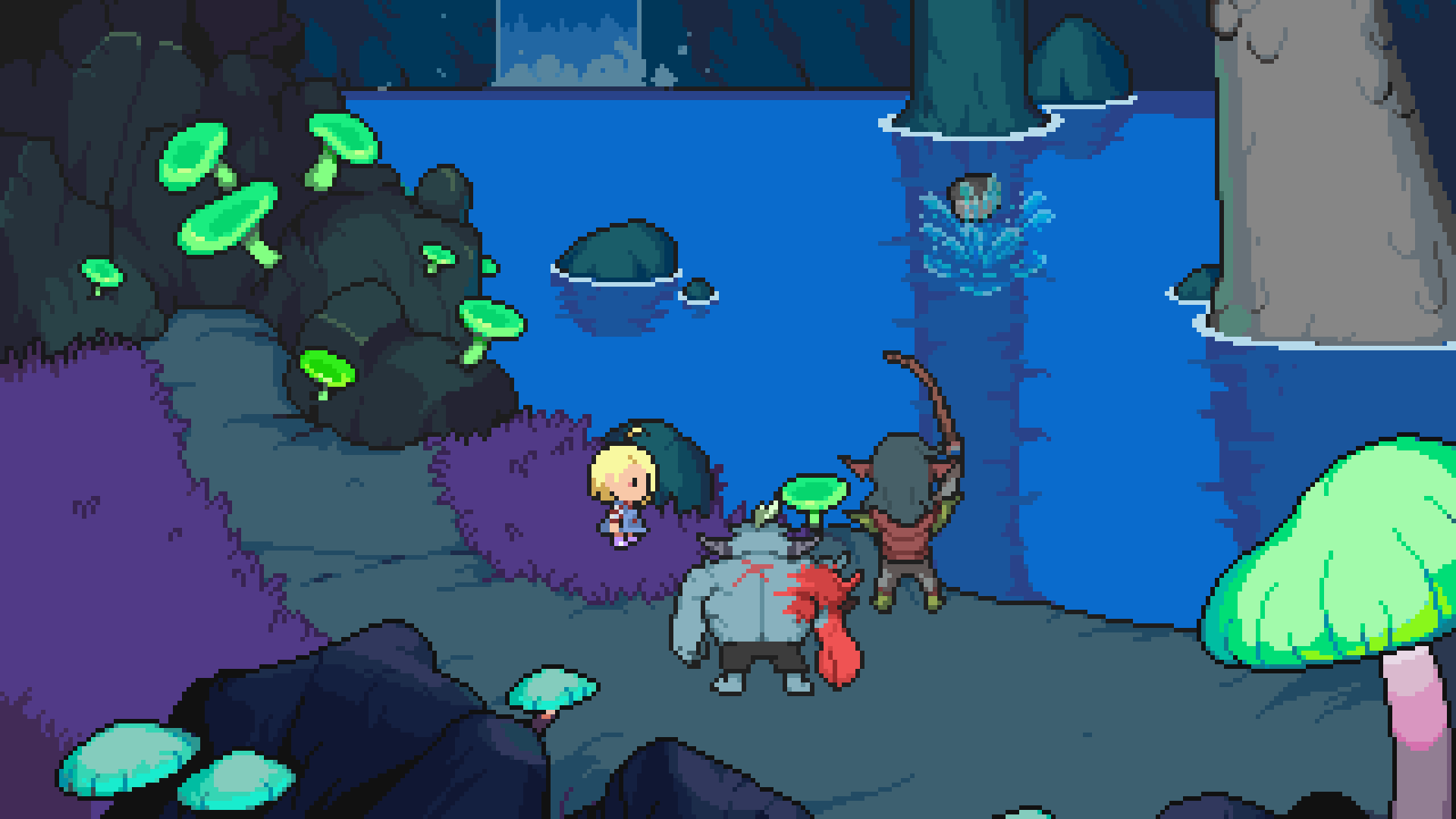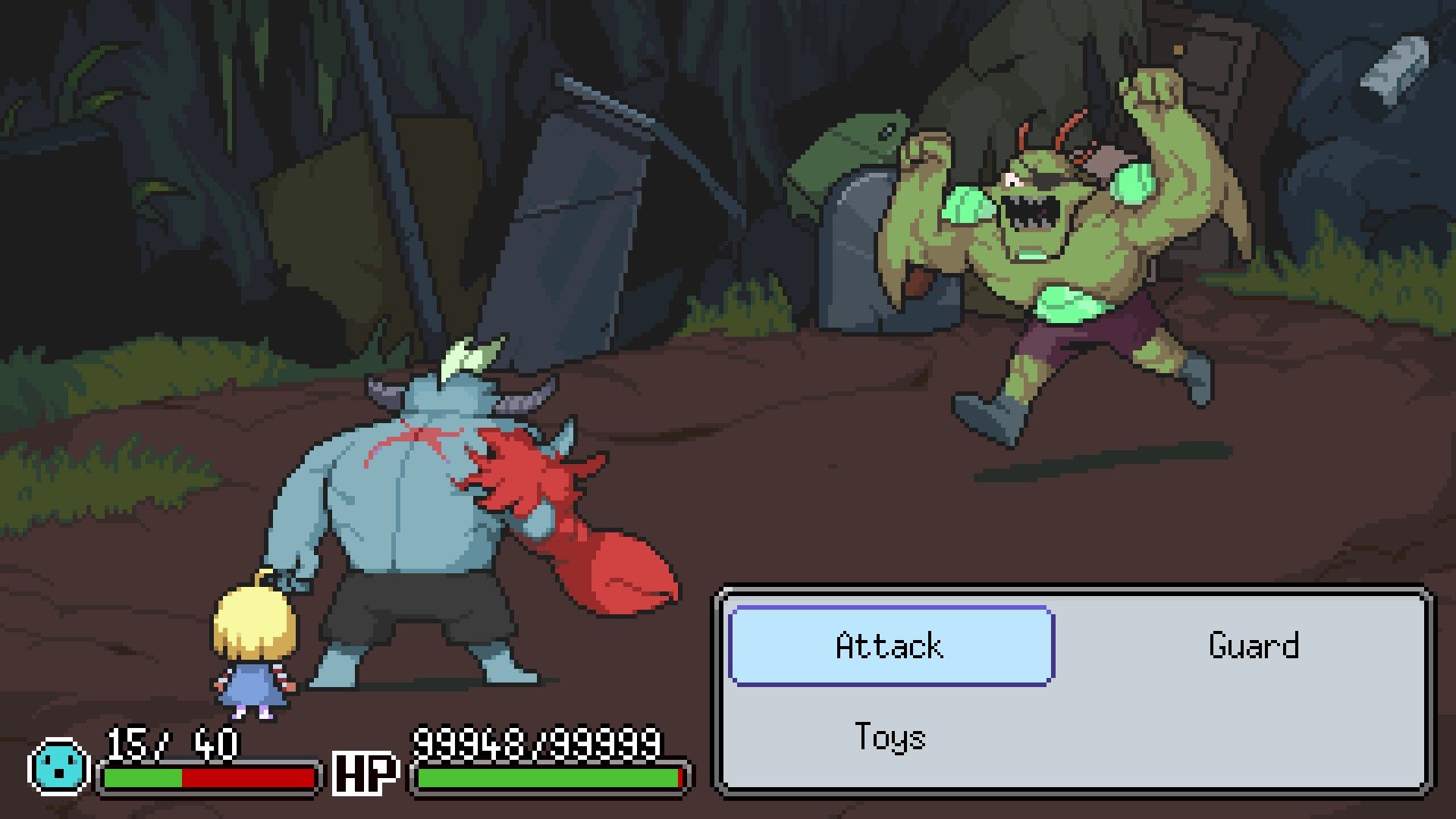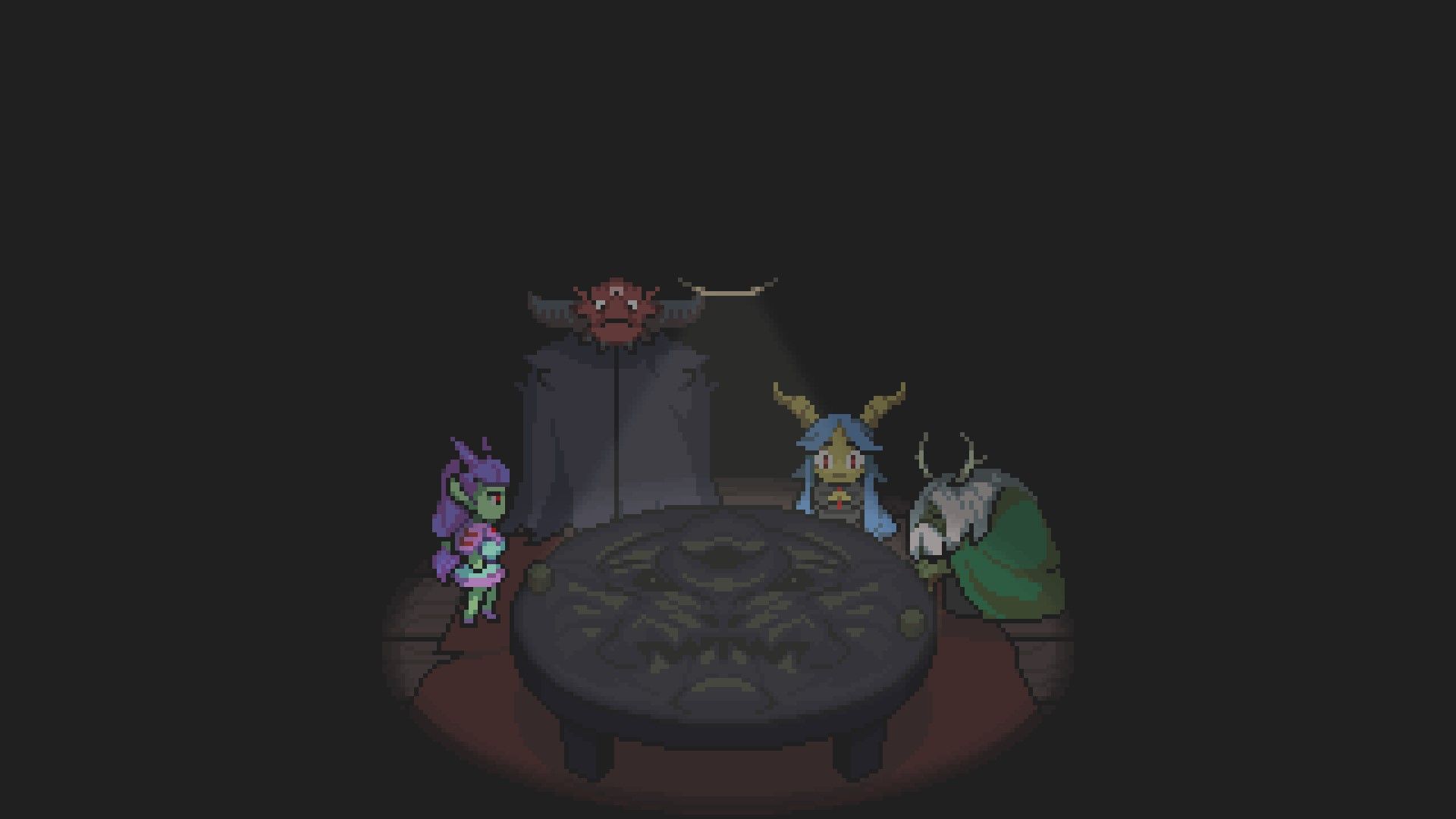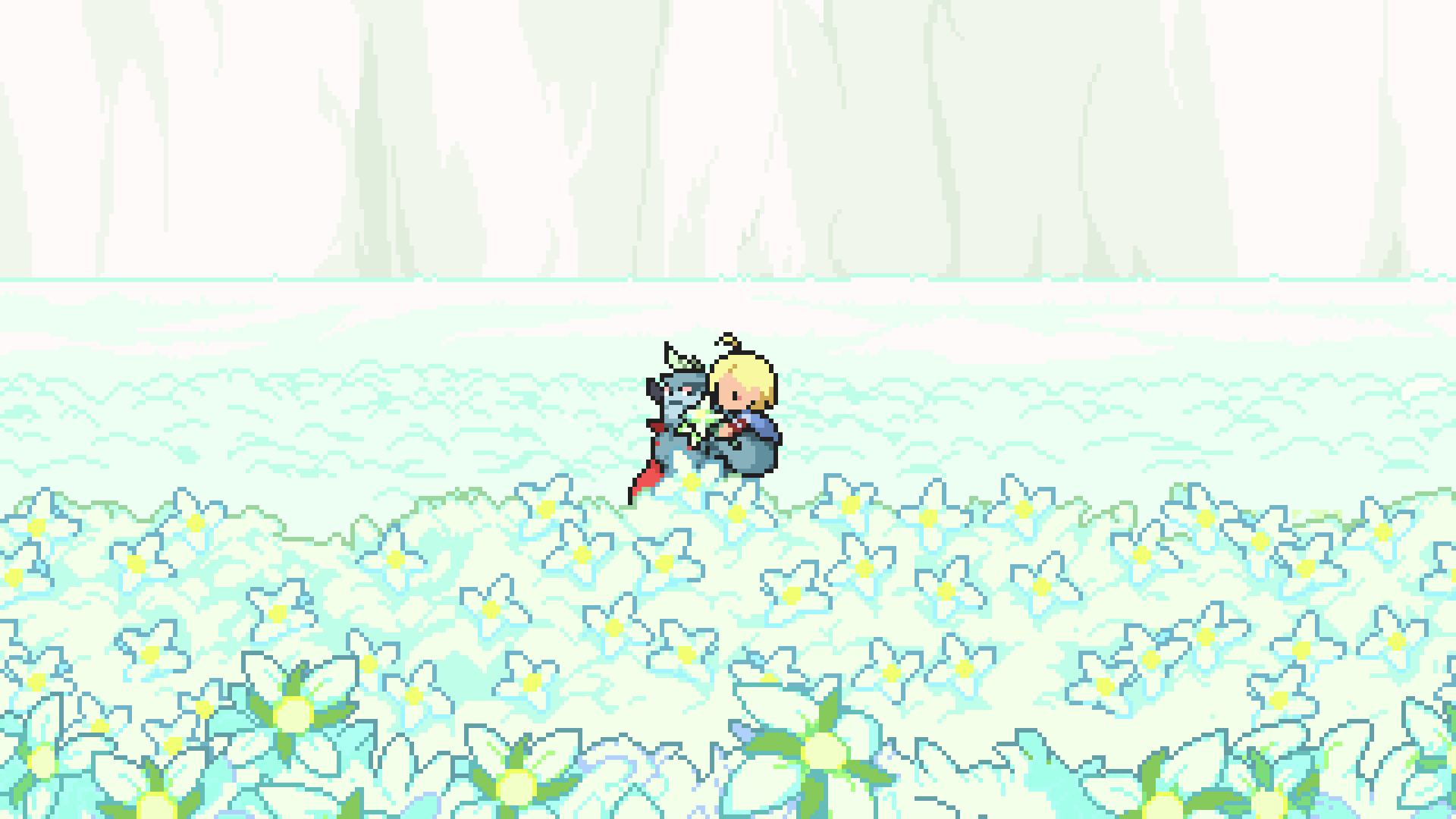How Meg’s Monster Demonstrates a Post-Undertale RPG World
Down the chutes to the world below


March 2023 seems to be the time for Laura Shigihara to take the gaming world by storm. I'm surprised that she hasn't reached the same level of viral fame as Omocat or Toby Fox, with the meme potential. Laura deserves this love and adoration.
Meg's Monster is not Laura's creation – that would be Rakuen and its sequel Mr. Saitou which also comes out this month– but she did contribute to the soundtrack. The Japanese developer Odencat created Meg's Monster, putting a lot of love into the art and story. But Laura's music in one of the trailers, where we hear an emotional song as a little girl looks toward a red sky, was the reason that I decided to explore the Steam page. She lured me in and landed me, hook, line, and sinker. I have never been so glad to get caught. The game has become one of my new obsessions.
Fall into A New World
Like Undertale, in Meg's Monster, a child falls into an underground world of monsters. Most are hostile, with many wanting to eat the child. One named Roy, however, finds out that if he makes the child cry, the world turns red and starts shaking. Roy's friend Golan theorizes that every time she cries the world is in danger of ending. As a result, they need to keep her calm until they either find an opportunity to dispose of her or help her find her mother. The girl reveals that her name is Meg, and she fell down into their world while trying to find her "Mommy." Despite the fact that Roy scared her, she latches onto him. Roy does not understand hugs, but he develops a protective instinct relatively quickly.
Pragmatically, the monsters know they should kill Meg while she's sleeping. That may solve the problem. Golan, however, receives orders from a mysterious being. They involve keeping Meg alive as part of an experiment before a great disaster happens. Golan, however, starts to have a change of heart the longer that Meg stays in Roy's cave.

One mystery abounds: in the prologue, Meg, now an adult, returns to the abandoned lab where she fell. The equipment is in disarray, and the transceiver radio barely works. She says her mother used to work here, lab coat and all. Somehow, she remembers a monster that rescued her when she was a child. How did she end up back in the human world? Where is Roy? And why did Meg return to the lab?
How Is Meg's Monster Different From Undertale?
The first difference is that we don't play as the human child who needs protection and may choose to fight in self-defense. Instead, we play as a monster named Roy who protects the child. At first it's realizing that if she cries, the world will end. Roy wonders if he can just kill her when she's asleep, and his friend Golan wonders the same thing. Yet a mysterious entity tells Golan via transceiver that right now they don't know if Meg's cries caused the disaster they heard. It's better to observe and protect her until they know for certain. Meg is some sort of scientific experiment, but she doesn't know that. All she wants to do is find her mother.
Secondly, we don't have a choice of being a pacifist or a fighter. If Roy doesn't fight, then Meg will cause the world to end owing to the fact that her HP goes faster than his does. He has to fight, and he and Meg get stronger as a result. The monsters don't die but they do get the tar beaten out of them. You can even interact with them after the battle, especially if you are fighting for control of a Salvage Yard.

Thirdly, the learning curve is much lower. Owing to the fact that we have no bullets, I don't have to dodge bullet hell. The boss battles have clearer telegraphing in the first hour, meaning I don't have to become flustered and move around in a panic. As a result, it makes the gameplay much easier. Knock on wood that I haven't hit a game over yet, which is a rather common occurrence when I play RPGs and games like these.
And the fourth difference is that we actually see dead humans. They end up in the Salvage Yards, where Golan and Roy found Meg. I was wondering if the human found in the dump would be alive, but no, they were very dead based on how Golan and Roy discussed it. In the Ruins of Undertale, we find out that there are no human dead bodies present because Asgore took the time to arrange funerals for them and give them proper coffins. As a result, the game is more kid-friendly. Even if a person decides to do the No Mercy/Genocide Route, the monsters' bodies turn into dust and children don't think about the implications. At least, one would hope that they don't.
We Won't Be Seeing Little Kids Dressed as Roy
I saw a lot of kids cosplaying as Sans at the Florida Supercon in 2016, and several people dressed as Chara. My doubts abound that we will see any kids that are dressed as Meg or Roy at the next con.
Meg's Monster doesn't seem to be for kids. Instead, the nightmare fuel seems aimed at adults and about the idea of caring for a creature we just found. Monsters want to either eat Meg or use her, and we get visible reminders that she is vulnerable. We empathize with Roy as he bonds with Meg and realizes that she needs someone to care for her. He becomes an unwitting parental figure and a big brother, one could argue.
Indeed, a running theme seems to be about how the authority figures in the game have an idea about what's going on but won't tell others. Consequences ensue because they think they have power. The Council that runs the Underworld knows about a neutrality pact and doesn't bother to tell monsters about it. Whoever sent Meg and her mother down below has some sort of ulterior motive, as does the silhouetted figure with glasses that passes orders to Golan. They view Meg as an experiment, with multiple variables at play.
We also find out that the Underworld is located in a giant hole in a mountain. Japanese firms have been setting up research labs and disposal facilities there. They don't just dump garbage, however; some also dump people that they no longer need. When Golan feels guilty and warns Roy that whoever sent Meg down here may not want her back in the human world for a reason, Roy becomes determined to join her to at least make sure she reaches home safely.

You can see the cultural influences from Japan undergoing a dangerous, deadly war. In Undertale, the hole on Mount Ebott is remote enough that few children fall into it, and it's only children that do. Meg's Monster shows people exploiting this kind of hole for waste disposal and doing covert scientific experiments. It shows a trauma that Undertale doesn't discuss, revealing that humans do suck and not everyone is deserving of mercy; it shows that we will exploit natural resources for selfish reasons. Golan understands that Meg doesn't need to register this kind of trauma.
Paul serves as the contrast to these authority figures. As he explains, he was also a human who fell. Unlike the others, however, Paul knew that he was deserving of being in the garbage disposal, as he was someone who had designed the chutes. He knew that he had to save those that did not know about their fates and give them a chance to return to the surface. It violates the neutrality pact but otherwise, a human will die underground, when none of them deserve such an undignified fate. Monsters see them as meat and free resources.
While Paul is a revered figure, he explains that he has no actual power. If the Council gets wind of what he's doing, he will face repercussions. Yet Paul undergoes this quiet rebellion, and it's implied he feels guilt as someone who designed these garbage chutes. He refuses to eat meat from unknown origins. We get a means of waste disposal, but Paul never considered that people would end up disposed of as well. For a simple sprite, he conveys a lot of guilt, we hear it in his dialogue text.
As humans, we are complicit in various forms of cruelty. We cannot always control those aspects, but we can take charge of how we make the world better. Whether that's donating to organizations or planting flowers, we find ways to reduce harm.

But What Happens Next?
A good question. I have paused for now at the moment right when Roy has found a way to get Meg home. Given that there are about four more hours of gameplay, I expect further disaster to happen. We are nowhere near the endgame or what is going to happen with Meg finding her mother, nor are we close to learning about the mysterious red star in the sky.
I do hope that the rest of the game sticks the landing with the previous themes and plotlines established. Golan is hiding something that could endanger Meg and Roy. Yet he's having a change of heart about that, possibly.
My theory is that these monsters used to be human. Being underground and exposed to that much waste and isolation distorted their forms, changing them. Roy may have once been human, which is how he quickly learns to fly a toy rocket. That may explain why Roy doesn't know anything about the Council or the rules involving the neutrality pact.
Seriously, I cannot wait to continue. A game hasn't drawn me in like this for ages.